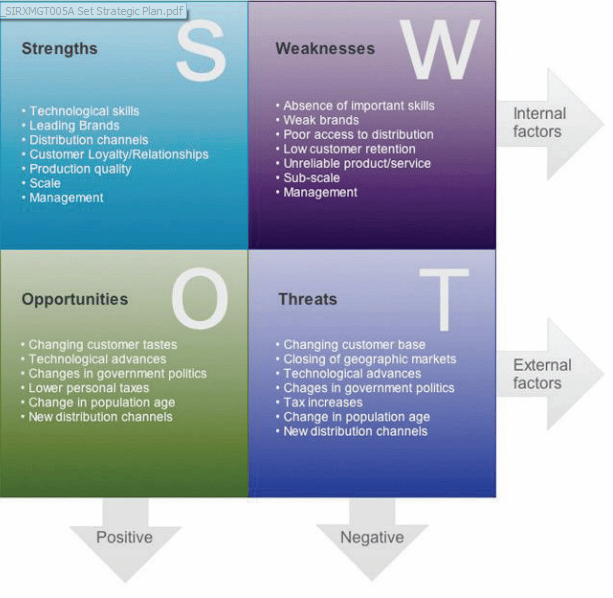There are specific actions that can support the success of strategic objectives. Taking the time to establish the groundwork to maximise the likelihood of the achievement of business objectives is a valuable investment. As a retail leader, it is necessary to think with the end in mind and plan for the outcomes you wish to achieve.
To learn how to steer your success in retail, the ARA Retail Institute runs multiple workshops on marketing and consumer behaviour. Join the ARA Retail Institute in their latest workshop which looks into building customer loyalty.
{{cta(‘a97946a3-f148-4f20-bdaf-8e0890217124′,’justifycenter’)}}
Ensure objectives are attainable
Once strategic objectives have been identified, the next step is to determine which strategies will most effectively achieve those objectives ensuring their attainability.
Here, we need to look a little closer at retail strategy.
When broken down to the simplest level, there are three basic business strategies in retail:
- Cost leadership
- Differentiation
- Niche
Niche is certainly a viable strategy; however as niche players grow more successful, niches invariably become larger and less defensible. As a result, mass-market strategies tend to be either cost leadership or differentiation. Whilst there are three generic strategies, in simple terms then there are two paths that retailers follow to make money: the profit path or the turnover path.
- With the profit path the retailer will aim to make good money on each item they sell, their aim is to sell it hard and they will adopt a cost leadership strategy
- With the turnover path the retailer will aim to make good money out of selling lots of items, their aim is to price it hard and they will adopt a differentiation strategy
Typically the big box, wide choice, low price retailers like supermarkets adopt the turnover path and price their products hard. In order to do this, these types of businesses invest in systems, suppliers and logistics in order to take costs out of the business and pass the savings onto their customers.
The specialty retailer, however, typically has a smaller store, a smaller choice of product and will adopt the profit path and sell their products hard. In order to do this, these types of businesses invest in their business location, fit-out, product, value, people, and marketing systems, in order to add value to the purchasing process for their customers.

Understanding the approach your business takes to retail strategy can provide a meaningful background to how you as a retail leader design and develop targets to drive the achievement of business objectives. Certain objectives will only be achievable within a given retail strategy and if the targets you are setting at store level in a supermarket are more aligned with a retailer that takes the profit path approach the likelihood of them being attainable and supported is diminished.
Focus on cost and time efficiency
Following through on the discussion of turnover and profit paths it is of interest to examine how retailers adopt strategies for improved business performance given each differing path.
Some generic ways in which a retailer can do this are outlined below:
- Increase sales volume
- Market penetration
- Increase usage / loyalty
- Attract competitors customers
- Discourage competitors
- Product development
- Internal development
- Joint venture or licensing
- Market development
To determine which strategies are indeed best for business it can be valuable to employ a SWOT analysis. It provides a framework for summarising the opportunities and threats inherent in the business context and the strengths and weaknesses of the internal to the business itself. Conducted at store level it can provide an interesting perspective to strategic development and help retail leaders think beyond the day to day of their business to facilitate more effective decision making.
When conducting a SWOT analysis it is essential to be as objective as possible.
- Strengths
Those areas where business has a clear edge over competitors
Strengths include exclusive ranges, more competitive prices, services offered that competitors do not, better trained staff, better depth or availability of stock, a more attractive store environment, a more accessible location etc.
- Weaknesses
Areas where competition has an edge or where business performance is being inhibited. Weaknesses include inadequate service levels, lack of product or poor promotion compared to competitors
- Opportunities
Identifiable external openings that could enable business growth I.e. new or previously unexplored customer segments
- Threats
Any external trends that may adversely affect business over the planning period i.e. arrival of a new competitor, the refurbishment of competitor stores, loss of supplier support
The diagram below illustrates a sample SWOT analysis for retail, outlining potential inclusions in each category.

Allow for continuous improvement
Whatever approach is taken to develop the right strategy for business, all retailers understand the need to continually strive for growth.
Change is a constant in business as it is in nature. If you are not growing, you are dying. As the population grows, generally the market grows, and if your business is not growing, competitors are taking your share of the market growth.
There are two general ways to grow in business:
- Offer existing products and services to new markets or attract new customers
- Offer new or modified products to existing customers or markets
Retailers can look to continually improve by considering the most appropriate ways in which they can grow. The initial question is one of whether to focus upon new products or new markets. Ideally large-scale retailers are focusing upon both but for smaller retailers with limited resources to invest in continuous improvement it is meaningful to focus in one place.
About ARA Retail Institute
ARA Retail Institute is Australia’s leading retail training provider for both accredited and non-accredited learning programs. For more information, please visit: www.retailinstitute.org.au




















